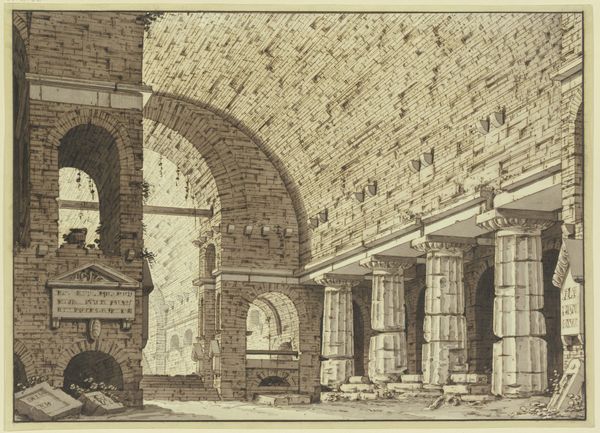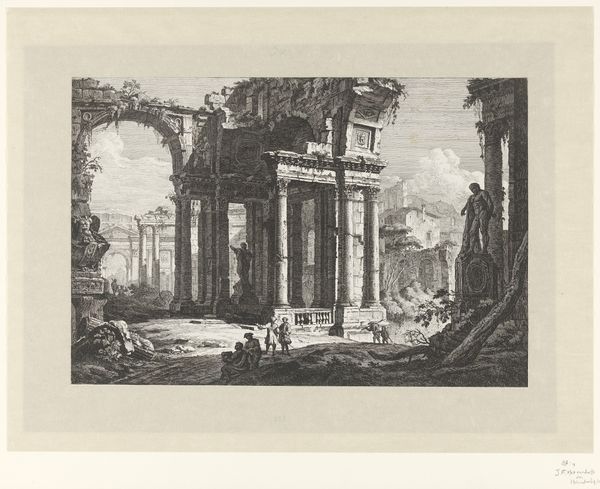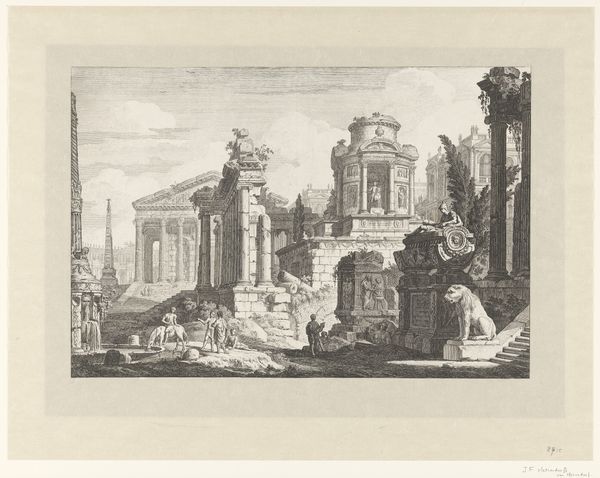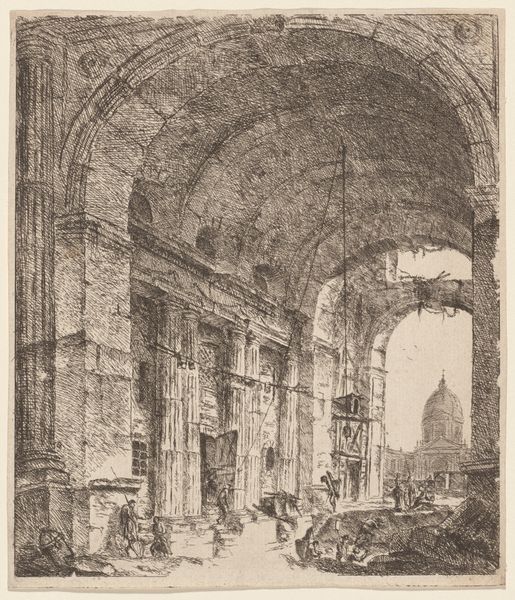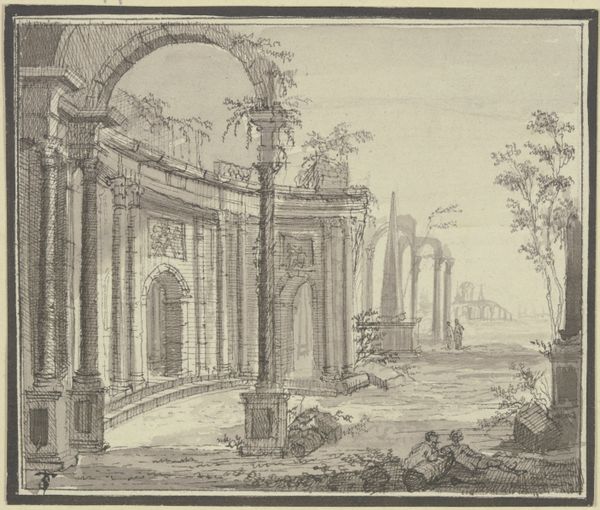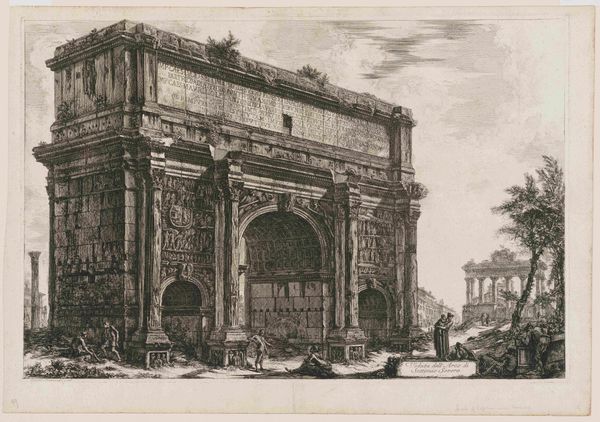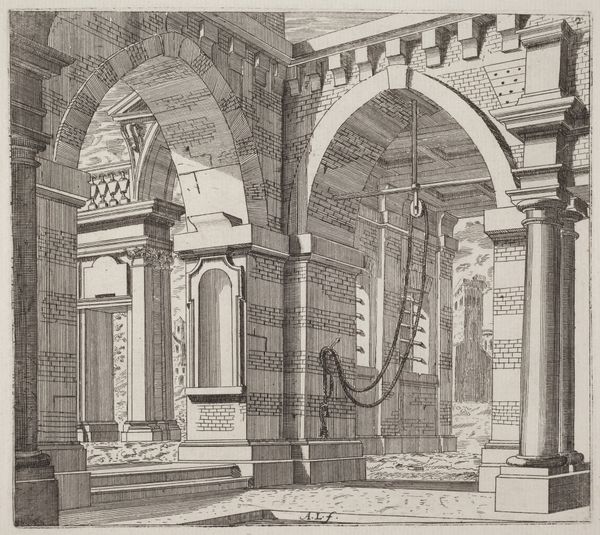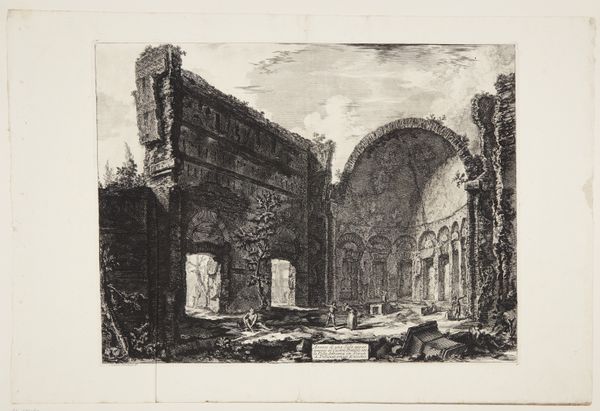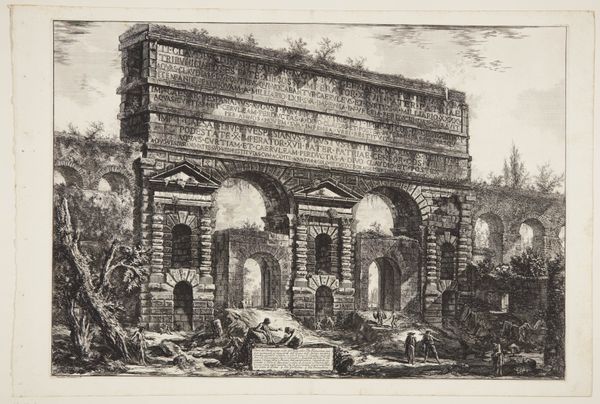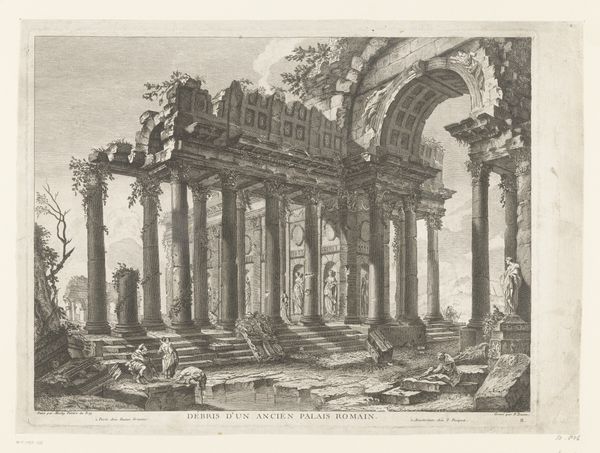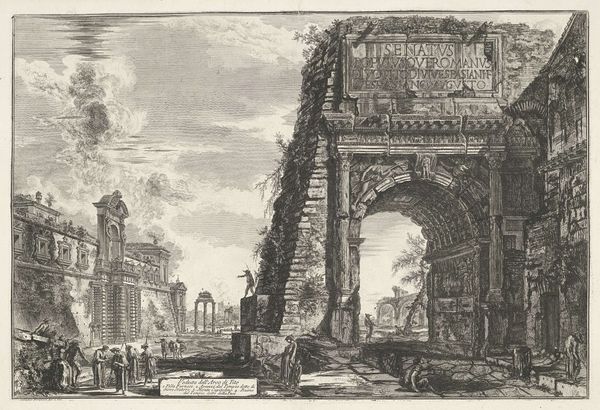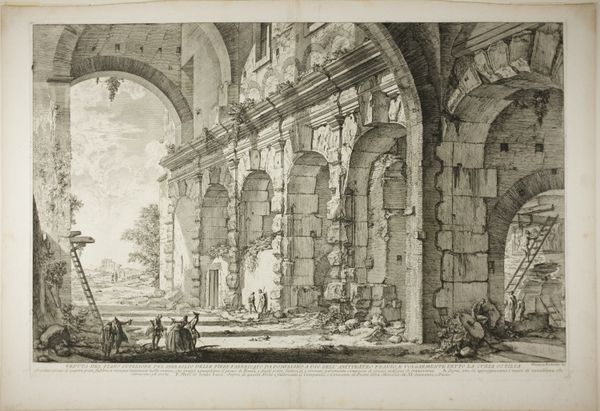
Figures in an Imaginary Architectural Interior 1755 - 1765
0:00
0:00
drawing, print, etching, engraving, architecture
#
drawing
#
baroque
# print
#
etching
#
cityscape
#
history-painting
#
engraving
#
architecture
Dimensions: sheet: 2 5/8 x 3 7/8 in. (6.6 x 9.8 cm)
Copyright: Public Domain
Curator: Pierre Moreau's "Figures in an Imaginary Architectural Interior," likely created between 1755 and 1765, presents a fascinating puzzle of space. The print work draws us into an almost Piranesian vision of monumental architecture inhabited by figures. Editor: My first impression is the sheer theatricality of it all! It feels like stepping onto a grand stage set. The stark contrast of light and shadow, coupled with the sheer scale, overwhelms the tiny figures. It’s as if they are extras in a drama directed by architecture itself. Curator: Exactly! Consider the arches and columns; they speak of power, and classical ideals of empire. The images adorning the column on the left almost look like a history painting, full of classical symbolism of sacrifice and victory, reduced to a supporting structure in this drama. It tells a story of how historical symbols of empire can easily be stripped of their original meaning, especially by new, succeeding forms. Editor: It also calls to mind the societal structures built around these classical forms, reflecting patriarchal and colonial power dynamics. The architecture isn’t merely a backdrop but a tool for constructing social hierarchies. The human figures seem diminished, trapped within these imposing spaces that reflect a world of systemic control. It's easy to feel disempowered, viewing it now. Curator: That disempowerment is an interesting point. Think about how Moreau used the architectural "language" of the baroque—the grandeur, the complexity, the almost overwhelming detail—as symbols for a certain mode of authority. But what kind of authority? Does it invoke temporal power? A religious authority? Or both? It's not overt; instead, the architectural imagery, deeply encoded and instantly recognized, conveys all the subliminal force. Editor: I read that lack of clarity, in the context of the period, as a potential critique. An unspoken questioning of absolute authority whether sacred or secular. That the theatrical setting might expose those systems as a production; contrived, performed, rather than absolute. Curator: A fascinating observation, especially since so much Baroque art uses such imagery to extol these absolute authorities. By refusing to apply it explicitly, Moreau leaves it open to interpretation, perhaps inviting such a critique. Editor: Which makes it powerfully relevant today, doesn't it? Curator: Absolutely. That’s precisely where this piece’s true strength lies.
Comments
No comments
Be the first to comment and join the conversation on the ultimate creative platform.

